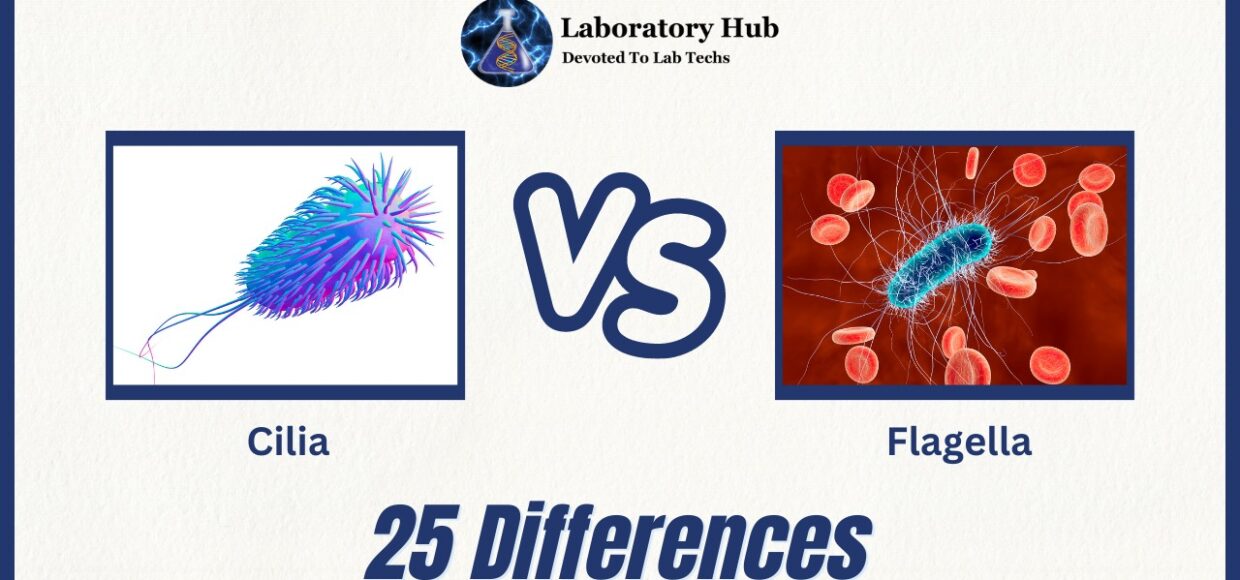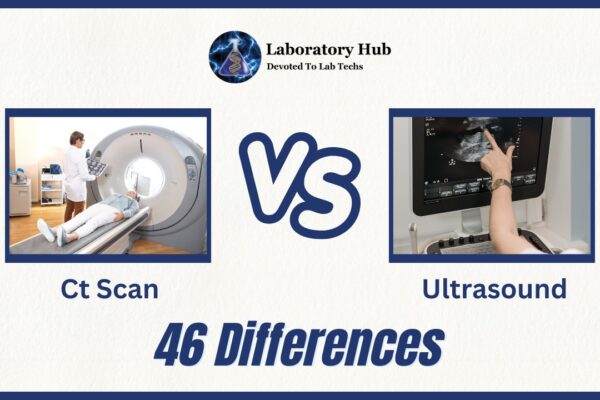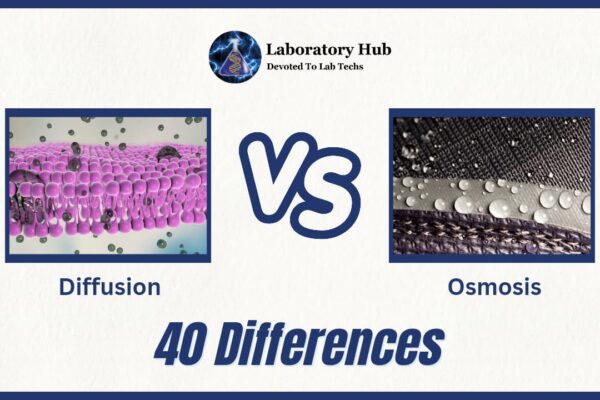Cilia vs Flagella- 25 Major Differences
Cilia and flagella, two extraordinary microscopic structures, are essential to many species, from single-celled to multicellular. These thin appendages can move, sense, transfer, and generate fluid flows. Cilia and flagella are related yet separate. This article compares cilia and flagella, examining their structures, functions, and importance in diverse species.
Cells have thin, hair-like cilia and flagella. These microtubule-based structures perform several cellular functions. Cilia and flagella share a microtubule-based axoneme. Flagella are longer and solitary, whereas cilia are shorter and more numerous. Cilia help cells transfer fluids and particles. They remove mucus and foreign particles from the respiratory passage. Flagella, however, drive cells across their surroundings with whip-like motions.
Single-celled protists and multicellular creatures have cilia and flagella. These structures’ functions vary by organism and cell type. Cilia and flagella move via bending. Axonemes waving or whipping because their microtubules glide against each other. Cilia have 9+2 microtubules, while flagella might have 9+2 or 9+0. Human cells have cilia and flagella. Flagella help sperm cells move, whereas cilia help maintain respiratory health in the respiratory tract.
Ciliaopathies can affect numerous organ systems and cause a variety of symptoms due to cilia and flagella defects. Cilia transport paramecia and respiratory tract cells. Sperm and Euglena move using flagella. Cilia and flagella help explain tiny cellular movement and sensory perception. Researchers can investigate the cellular function and create treatments for related illnesses by deciphering these components.
S. No. | Aspect | Cilia | Flagella |
1 | Structure | Short, hair-like projections on cell surface | Long, whip-like appendages on cell surface |
2 | Number | Many, covering the entire cell surface | Few, usually one or a few per cell |
3 | Length | Shorter (typically a few micrometers) | Longer (typically tens of micrometers) |
4 | Movement | Coordinated, back-and-forth motion | Propeller-like, rotational or undulating motion |
5 | Beat Pattern | Synchronous, beat in coordinated waves | Asynchronous, beat independently |
6 | Arrangement | Can be arranged in single or multiple rows | Typically single or double, positioned at one end of the cell |
7 | Cellular Coverage | Cover the entire cell surface or localized to specific regions | Usually present at one or both ends of the cell |
8 | Structure | Made up of microtubules (9+2 arrangement) | Made up of microtubules (9+2 arrangement) |
9 | Composition | Composed of microtubules and dynein | Composed of microtubules and dynein |
10 | Anchoring | Anchored to the cell membrane by basal bodies | Anchored to the cell membrane by basal bodies |
11 | Cellular Function | Locomotion, movement of substances along the cell surface | Locomotion, movement of the entire cell |
12 | Location | Found in various cell types, including respiratory tract, fallopian tubes, and trachea | Found in bacteria, archaea, and eukaryotic cells |
13 | Beat Frequency | Typically beat at a higher frequency | Typically beat at a lower frequency |
14 | Sensory Function | Involved in sensory perception, movement coordination, and cell signaling | Involved in sensory perception and movement |
15 | External Structure | Protrude from the cell surface | Extend from the cell surface |
16 | Occurrence | Common in multicellular organisms and certain single-celled organisms | Found in various organisms, including bacteria and archaea |
17 | Composition | Composed of microtubules and accessory proteins | Composed of microtubules and accessory proteins |
18 | Propulsion | Ciliary beating generates fluid motion and moves substances along the surface | Flagellar motion propels the cell through the fluid |
19 | Human Examples | Respiratory tract cilia, oviduct cilia, tracheal cilia | Sperm flagella, bacterial flagella |
20 | Mode of Action | Beating motion or coordinated wave-like motion | Propeller-like motion, undulating motion |
21 | Genetic Disorders | Primary ciliary dyskinesia (defective cilia), Kartagener’s syndrome | Flagellar defects can cause motility impairments |
22 | Motion Coordination | Coordinated beating of cilia in the same direction | Independent motion of individual flagella |
23 | Locomotion | Create fluid currents to move substances along the cell surface | Provide propulsion for cell movement |
24 | Sensory Functions | Involved in sensory perception and detecting external stimuli | Involved in sensory perception and response |
25 | Examples | Tracheal cilia, fallopian tube cilia, protist cilia | Bacterial flagella, eukaryotic cell flagella |
Also read: What is an Incubator & their types?
Frequently Asked Questions (FAQS)
Many species have cilia and flagella. Long, thin projections emerge from cells and are important in movement and sensory perception.
Their structural organization and movement patterns differ most. Shorter and more numerous, cilia cover a cell’s surface. They have row-like, synchronized motions. Flagella are longer and appear singly or in pairs. They whip the cell.
Human organs and tissues have cilia. They are plentiful in the respiratory system, where they remove mucus and trapped particles. They help eggs migrate through the fallopian tubes in women. Sperm cells travel to the egg via flagella.
Cilia and flagella move cells and organisms. Cilia sense environmental changes. Cilia and flagella aid fluid circulation in several species.
Microtubules help cilia and flagella move. Cilia and flagella have tubulin protein microtubules. Flagella have 9+0 microtubules, while cilia have 9+2. Motor protein dynein slides microtubules to move them.
Cilia and flagella are found in many creatures, from bacteria and protists to mammals and plants. They help organisms move, eat, and sense.
Ciliaopathies are hereditary illnesses caused by cilia and flagella malfunction. PCD, Kartagener syndrome, and PKD are examples of multisystem diseases. These disorders cause respiratory, reproductive, and renal issues.
Cilia and flagella can sometimes regenerate. Cell type and injury determine regeneration. Planarians (flatworms) regenerate cilia and flagella. Human cilia and flagella regenerate poorly.
Laboratory methods can study cilia and flagella. Researchers explore cilia and flagella ultrastructure using electron microscopy. Genetic and molecular methods study the assembly, function, and control of genes and proteins.
Cilia and flagella have been important throughout evolution. They help organisms to adapt by providing mobility and sensory capacities. Cilia and flagella have helped organisms evolve swimming, eating, and reproductive methods, affecting their survival and success.







